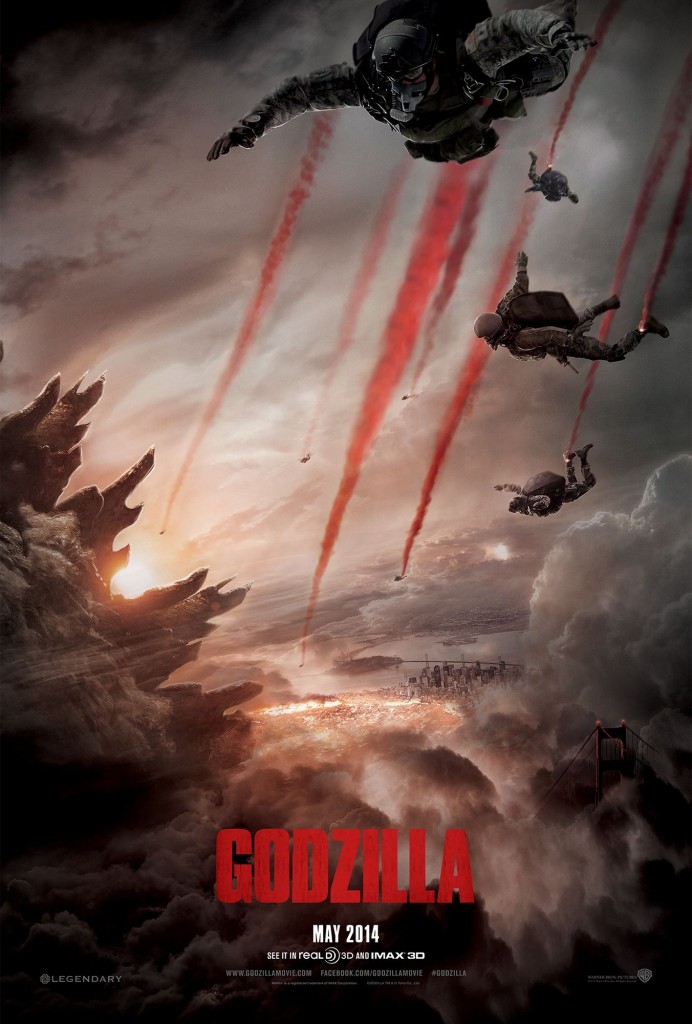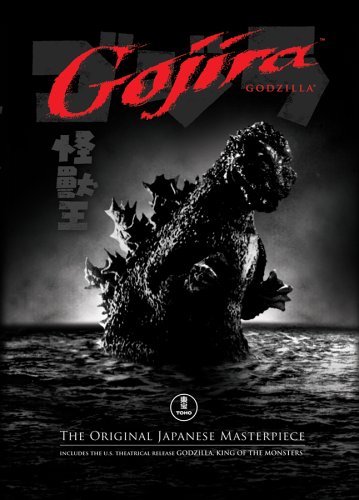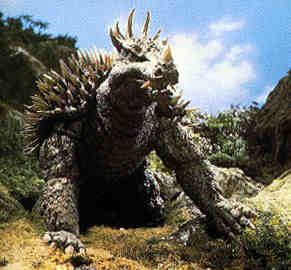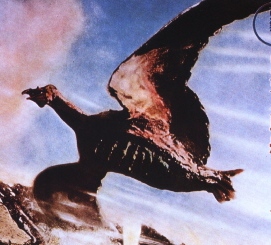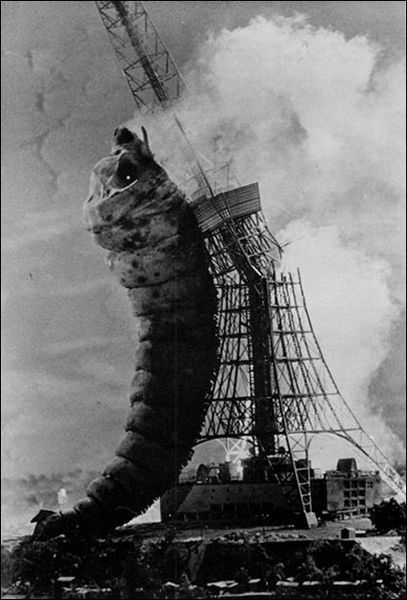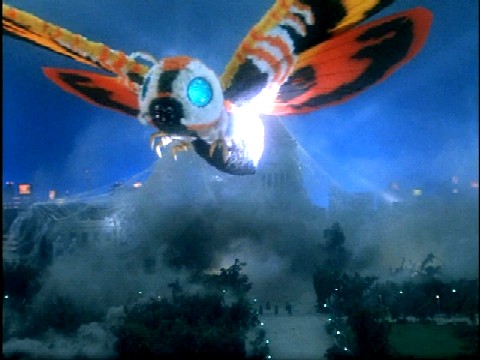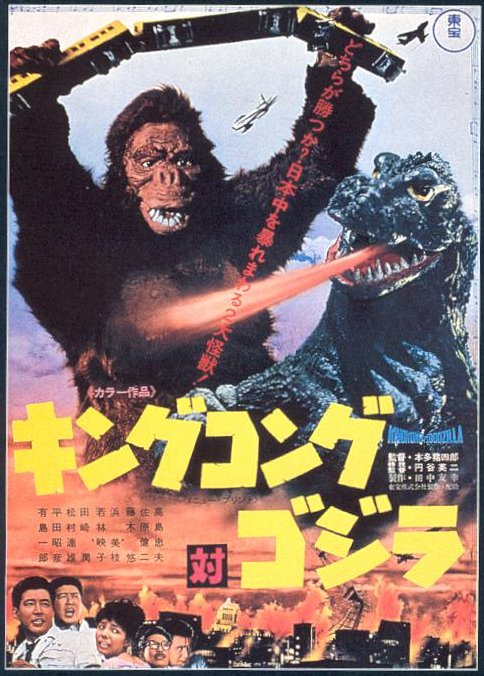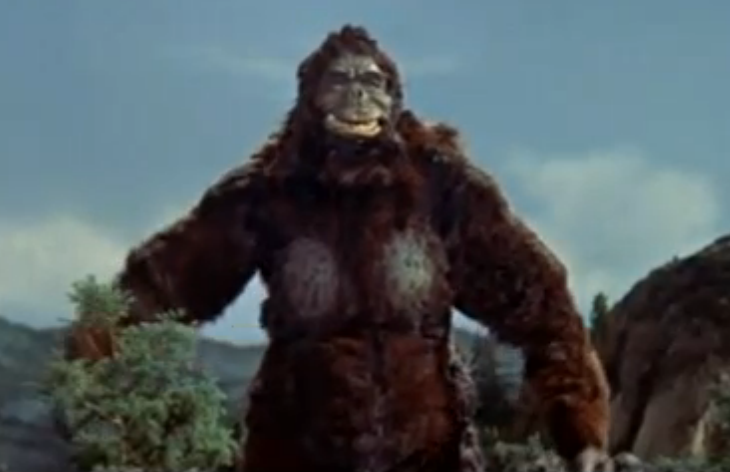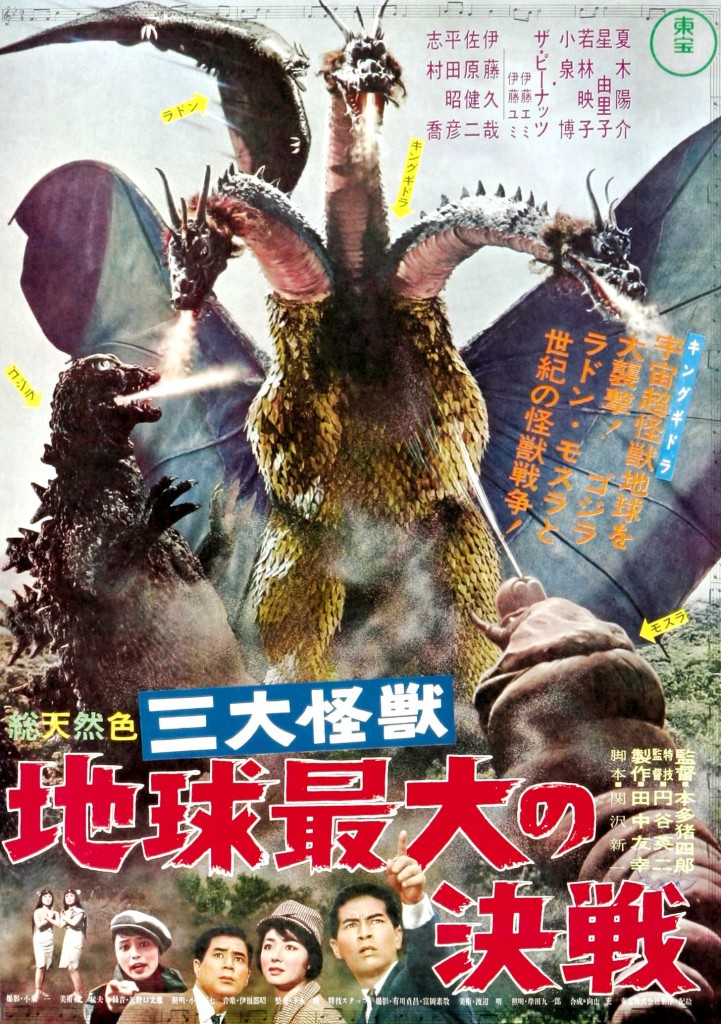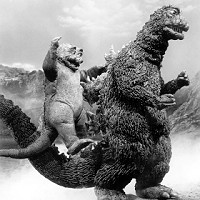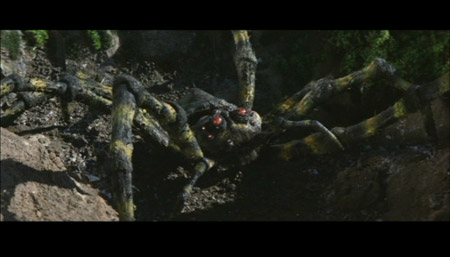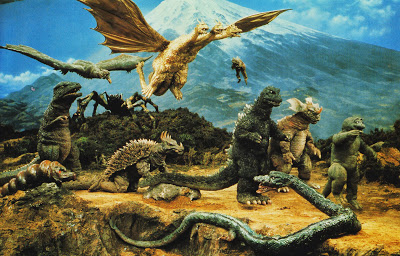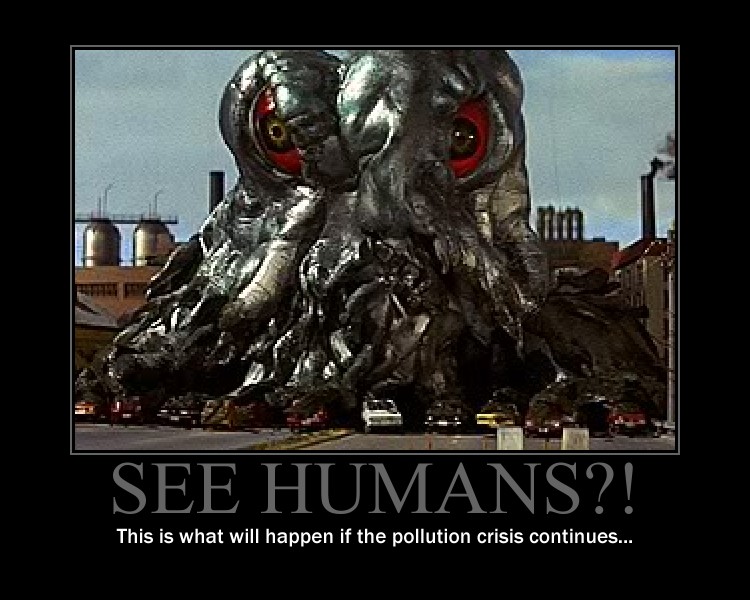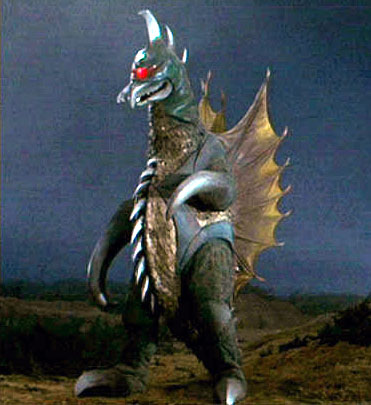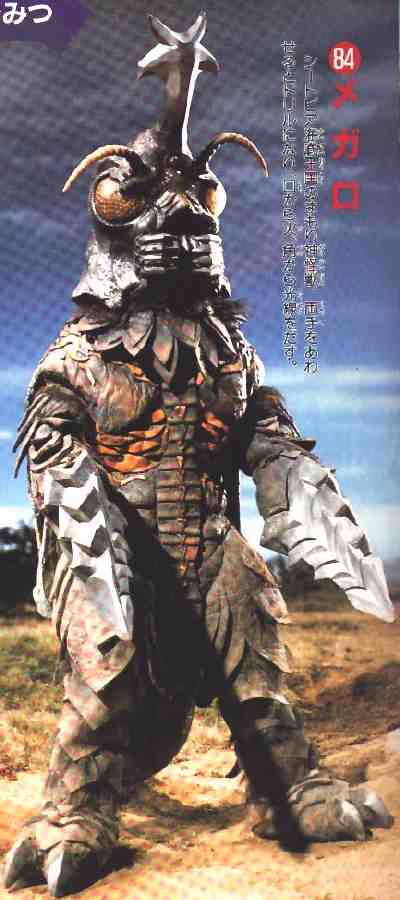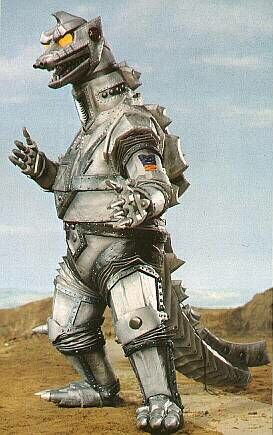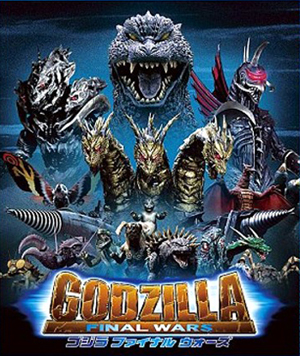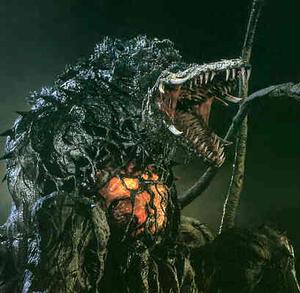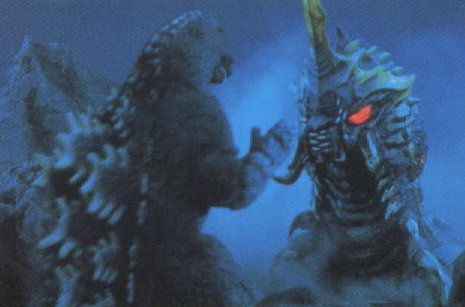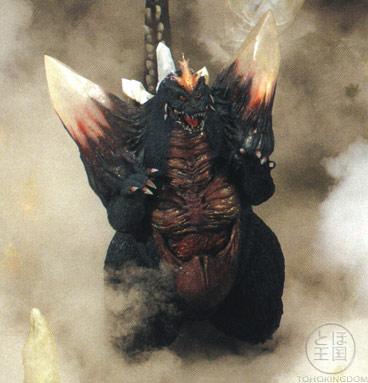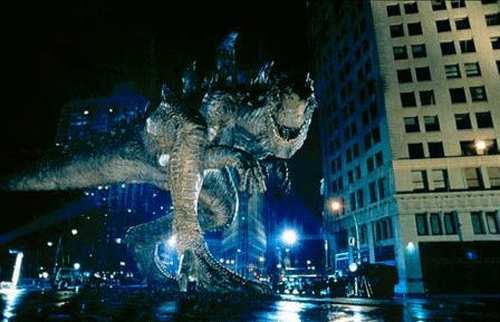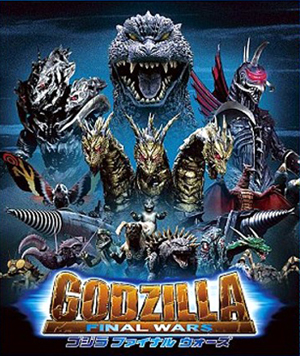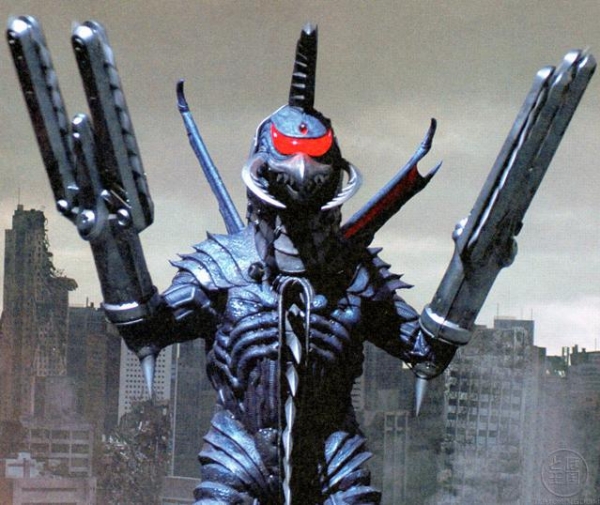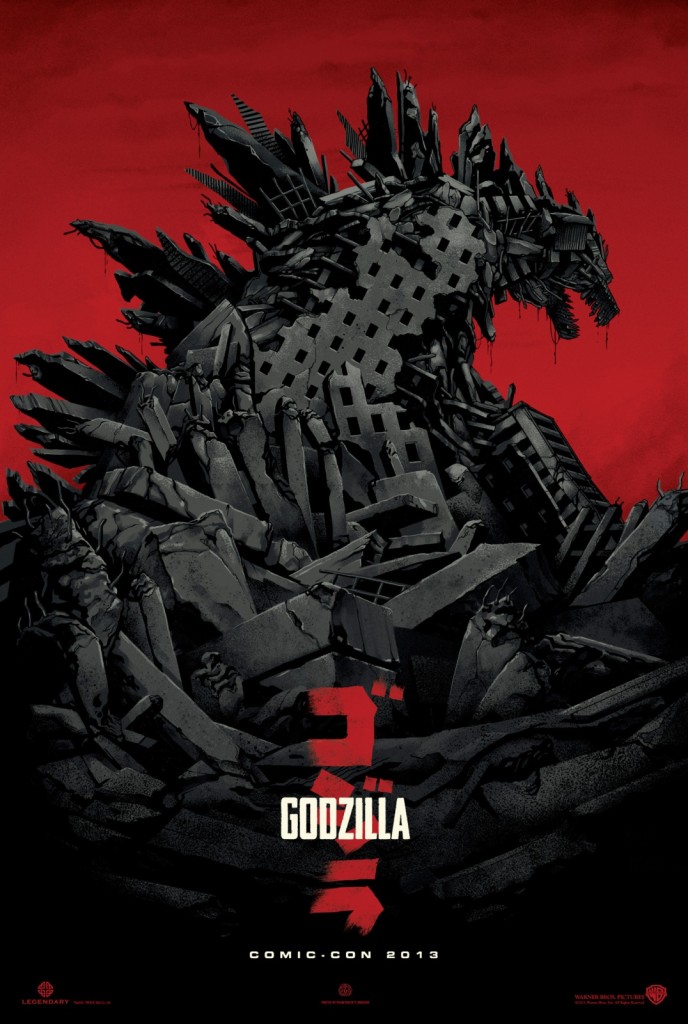Way, way back in kindergarten – somewhere around 1992, if my memory doth serve – I distinctly remember a journal entry I was asked to write. (Go ahead, try and remember what you were writing about in kindergarten. I’ll wait.) The topic was “What games do you like to play at recess?” In these journals, our teacher was looking for a minimum of one (1) word, which could be accompanied by pictures to better illustrate the nature of the physical activities we were getting up to for fifteen minutes a day five times a week. Many of my colleagues wrote simple entries about the joys of playing kickball, tag, or the legendary game of “slide”, which involved a stick figure standing halfway down a right angle triangle that would have given Pythagoras nightmares for millennia. My teacher, poor Mrs. Richards, went around the class, reading them out loud for everyone to share. Naturally, a fair shake of trouble-makers had not participated, which led to much laughter and consternation amongst the class.
Finally, she arrived at my desk. I proudly/simply handed over my journals – I had been unable to decide upon a single game that would accurately define how I spent my time at recess, and so I had provided not one, not two, but three journal entries. (This indecisiveness would become greatly reflected in my extracurriculars and career choices for years to come.) Mrs. Richards took them up, cleared her throat, and prepared to read them out loud.
Then she stopped.
“Travis?”
“Yes, Mrs. Richards?”
“What’s this?” She showed me the second – already out of order! – of my highly detailed journal entries, utterly baffled by what I had created.
I was shocked. It had seemed so clear to me. “That’s the game ‘Rodan’,” I said, trying to remain humble at my genius.
“Ah,” said an uneasy Mrs. Richards. “And what kind of game is…’Rodan’.”
“Oh,” I said, realizing why she was confused. “That’s where you fly around the playground, pretending that you’re Rodan flying over Mount Fuji.”
“Ah.” She shuffled to the next journal entry. “And, uh – Moth – Moth – ”
“Mothra,” I said. “That’s where you fly around – but differently than when you play Rodan – as Mothra, looking for the tiny princesses who have been kidnapped.”
“I see,” said Mrs. Richards. “And Mothra is a…what is Mothra?”
This, I most definitely did not understand. “Well, Mothra is a moth monster. Hence, Mothra.” Even as a five year old, I had grasped the relatively simple concept of the Americanization of foreign cinema. Impatiently, I nudged her towards the first journal entry. “And that one there – my first one – is – ”
“I know this one,” said Mrs. Richards, clearly not amused. The rest of the class regarded me as though I’d grown wings during the interim – not functional wings, mind you, but limp, useless, flaccid wings that were to me mocked rather than glorified.
“Yes,” Mrs. Richards continued. “Everyone knows about Godzilla.”
I was summarily given time-out for “not following through on the assignment”.
The reboot of Godzilla (though we can’t be sure of exactly whether it’s a reboot, a re-imagining, or a continuation of the prior Godzilla series until it actually debuts) comes out this Friday. Needless to say, I’m super-excited for this. As a child, I obsessively collected every single Godzilla movie I could get my hands on, delighted by the strange creatures contained within them. Godzilla was one of the most effective cinematic metaphors for the terror of the Atomic Bomb ever committed to cinema–at first. In a reversal of fortune, Japan eventually turned him from monster to protector, calling upon Big G to save their country – and at times, the world – from being trampled time and time again. Godzilla has died and been reborn countless times, fought enemies from outer space and beneath the sea, and even fought America’s most reputable monster to a standstill. With one rather dreadful exception, the Godzilla franchise is one of Japan’s most beloved contributions to world cinema (though of a decidedly different nature than the works of, say, Kurosawa or Ozu), particularly to young children.
And now, he’s back.
Some of you may know a great deal about Big G. Some of you may only know him as a big damn dinosaur that breathes fire and routinely stomps Tokyo. Some of you may not care at all. (If this is the case, I advise you to stop reading.) Whatever the case, it’s highly doubtful that anyone is familiar with every single entry in the Godzilla canon. While few to none of the following films will be relevant to this Friday’s American spectacle (I’m still pulling for Heisenberg vs. Godzilla to be the climax), they should help to give you a better appreciation of the rich cinematic history of the King of the Monsters.
Without further ado, we begin:
PART I: THE SHOWA PERIOD
Gojira (1954)
The original film remains a stark, brooding reflection of the damage wrought by the atomic bomb. It’s filled with haunting images of death and destruction, and shows a populace already too used to devastation at a level beyond anything we’ve already seen. In a very loose sense, Gojira was to Japan after the atomic bomb what superheroes are to American cinema after 9/11 – a way of dealing with a world shattering event. Because of this, it’s hands-down the best film of the franchise.It’s also the primer movie for each of the three separate series of Godzilla films released by Toho Studios, the famous Japanese power-house also responsible for several of Kurosawa’s works. (Side-note, the film’s director, Ishiro Honda, trained as an assistant director under Akira Kurosawa on the film Stray Dogs, and returned to assist his mentor on Kagemusha, Ran, and Dreams. In addition, Gojira features a fantastic turn by Kurosawa regular Takashi Shimura, who plays the samurai Kambei in Seven Samurai. There’s an entire film class that could be taught about the post-war Japanese film industry.) The first series of films, which span from 1954 to 1975, is referred to as the Showa series, named for the Showa period in Japan.
Also, pay no attention to the bastardized American version, Godzilla, King of the Monsters!, with Raymond Burr inserted into new scenes as a way to help Americans relate to the film. What it actually does is strip the movie of its elegance. Like I said, avoid it.
Godzilla Raids Again/Gigantis, the Fire Monster (1955)
(Interlude One: When bold titles split into two separate entries, the first is the Japanese name, with the second being the American release. In the event of a single title, the films were released in both countries under the same banner.)
This film brought back Godzilla, as well as Takashi Shimura, while introducing fan favorite kaiju Angilas/Anguirus/Anzilla (used only by douchebags). A spiky quadruped, Anguirus was the one monster I refused to perform as, if only because crawling around on your hands and knees while stomping Lego buildings gets old quickly. I can only imagine how the actor in the foam-rubber suit felt. In the American version, for some reason, Godzilla’s name was changed to Gigantis. Why? Who knows? All we do know is that it was an abject failure; all future releases kept Godzilla’s name.
Rodan (1956)
After their initial success with Godzilla’s two films, Toho branched off into similar kaiju adventures, with all new forms of weird monsters who would emerge to wreak havoc. Some of these were more successful than others, so we’ll only talk about the two most important ones here. The first is Rodan, about two giant pterodactyls who emerge when greedy coal miners delve too greedily and too deep, unleashing first a plague of giant bugs, followed by the Rodans, who first eat the bugs and then the coal miners. It’s directed by Honda, and if you’re six years old, it’s freaking terrifying. Much of the movie is set in the dark, and Honda makes good use of not showing us too much of the monsters until we absolutely need to see them. The threat of the insects, and of Rodan flying overhead at speeds fast enough to cause small hurricanes, is threatening enough. This was also the first color kaiju movie, a precedent that all future ‘Zilla movies would follow in. Rodan, like Anguirus, would become one of Toho’s most popular monsters, as we’ll see in future movies.
Mothra (1961)
I’ll be honest: I don’t get this one. Mothra is literally a giant moth-god, nurtured by 12″ twin princesses who sing a rather annoying song in unison as a way to summon their god whenever they’ve been kidnapped. (Which is often – let’s be fair, they’re 12 inches tall.) Mothra appears in two forms: a giant caterpillar who can spin super-strong webs of silk, and a giant moth form that can also cause hurricane winds and devastate Tokyo. Both forms make appearances in subsequent movies.
The one thing that can be said for Mothra is that she always fights on behalf of the earth. (At least, it’s usually a she – the movies make a point that Mothras die like fruit flies, constantly rebirthing them into male and female forms. It’s amazing there’s not an island of moth gods somewhere in the South Pacific.) There is never a question of Mothra being evil. This is the first indication of Godzilla’s transformation from villain to protector, and it comes in the form….of a giant moth. *sigh*
King Kong vs. Godzilla (1962)
Effectively, this was Batman vs. Superman before it was cool. The two most iconic (at the time) monsters of the U.S. and Japan square off against one another. In the Japanese version, Godzilla wins. In the American version, Kong is victorious. Unfortunately, as anyone who’s seen the movie and is older than eight can attest, audiences everywhere lose. The movie is abjectly terrible.
Minor side-note: originally, Eiji Tsuburaya, the effects master behind Toho’s kaiju, wanted Kong to be animated via stop-motion, as Willis O’Brien had done in the 1933 picture. It was deemed more cost-effective to have a man in a Kong suit play against Godzilla.
You be the judge.
Mothra vs. Godzilla/Godzilla vs. the Thing (1964)
The first clash of monsters pits moth against giant radioactive dinosaur with fire-breath. In their first clash, Godzilla toasts the moth. However, a giant egg (the “Thing” for American audiences) hatches, revealing two giant caterpillars! These caterpillars wrap Godzilla into a silk cocoon and push him into the ocean. Having had enough, Godzilla says “fuck this noise” and flees. It’s not the worst of the films, and a subplot about the dangers of capitalizing on monsters big enough to crush you with their little toe is relatively decent. That might not sound like much, but the further we go here, the more important you’ll see that is.
Ghidorah, the Three-Headed Monster (1964)
This one set the tone for all future Showa Godzilla movies, insomuch as it marked G’s transformation from world-beater to world-saving hero. It also introduced his main villain for many years to come, in the form of the evil, alien dragon Ghidorah, a nightmare beast that resembles a flying hydra from Jason and the Argonauts. It also marked the first all-monsters-attack team-up, bringing together Godzilla, Rodan, and Mothra to fight against the three-headed alien. It’s remarkably good, features a breathtaking use of special effects and Technicolor, and remains one of the best kaiju movies of any eras.
Invasion of Astro-Monster/Godzilla vs. Monster Zero (1965)
If Godzilla movies were James Bond movies, this would be Moonraker. In this adventure, Godzilla and Rodan are borrowed by aliens to come to Planet X to fight Ghidorah, who is busily harassing them. (Planet X lies somewhere between Jupiter and Mars, which in hindsight makes me sad that there’s no use of “Fly Me to the Moon” as Godzilla and Rodan are space-bubbled across the universe) Turns out the whole plan of the aliens was to conquer Earth behind the combined force of all three monsters! (Aliens attacking the Earth becomes a common theme in movies of this period.) Fortunately, a small band of heroes frees Godzilla and Rodan, who pummel Ghidorah into submission. (Mothra remains nowhere to be seen – my hypothesis as a child was that he/she was off in a cocoon somewhere)
Oh, this happens in this movie, too.
Godzilla vs. the Sea Monster (1966)
Godzilla fights the titular monster, Ebirah, which is…a giant lobster. The climax involves Godzilla tearing off Ebirah’s claw and taunting the lobster’s remains, before settling down to a nice seafood dinner with hot butter dipping sauce and tongs. I only made part of that up.
Son of Godzilla (1967)
One of many Godzilla movies where the theme is essentially “Don’t Fuck With Nature”. In this, a freak weather experiment awakens Godzilla and his egg (!), which hatches and releases Minya, his son. The experiment also causes several animals on the island to grow to enormous size, specifically a small horde of praying mantis (called Gimantis or Kamacuras) and a large, pissed off spider (Spiga or Kumonga). Of most of the monsters, Spiga is the one who seems to give Big G the most trouble. This may be because all spiders are inherently evil. Who can say.
Destroy All Monsters (1968)
While the main plot itself is starting to wear thin, this is what fans return to time and again as the consensual best representation of everything Toho had to offer.
Consider the roster: Godzilla, Anguirus, Rodan, Mothra, Ghidorah, Minya, Baragon (a toad-like dragon from a terrible, terrible movie called Frankenstein Conquers the World), Gorosaurus (a dinosaur/t-rex creature from a terrible, terrible sequel to King Kong vs. Godzilla), something called Varan, Manda (a giant Japanese dragon/snake monster), and more aliens! It was the mash-up that fans had been craving, The Avengers of its time. It’s always fun seeing cities be destroyed across the world, and the final throw-down is as epic as one could hope. Say what you will about the Showa movies’ increasingly silly premises, but their fight choreography remained fairly consistent in its quality. Worth checking out.
All Monsters Attack/Godzilla’s Revenge (1969)
A stock-footage movie designed to make a quick buck, the story involves a young boy who daydreams about hanging out with Minya as he learns to fight bullies. Meanwhile, Minya learns to stand up to a bully of his own, a laughably silly thing called Gaborah. I saw this on a backscreen at the Holiday Club last week, and it did manage to elicit a little nostalgia for me. Perhaps it’s exclusively for kids, because grown-up Travis quickly realized that this movie is wretched. Worth avoiding.
Godzilla vs. Hedorah/Godzilla vs. the Smog Monster (1971)
Godzilla fights a pollution monster. Yup. It’s actually almost unsettling, if only because Hedorah’s shape is never clearly defined. Unfortunately, all of this is undone as soon as it’s revealed that Godzilla can fly.
(Sidenote #2: Andrew pointed out to me that this was listed on a list of the “50 Worst Movies Ever Made” at some point by somebody. I can’t argue on behalf of shoddy production values, a plot devised by a third grader, or horrendous acting and storytelling. This movie sucks. HARD. At the same time, I feel that watching this movie looking for anything more than a radioactive reminder that pollution is bad and the best monster movies are the cheapest defeats the purpose of watching these types of movies. Vice versa, anyone looking to glorify/denigrate schlock over other movies is also missing the point. That’s why “The Evil Dead” is next to “The Exorcist” on my shelf.)
Godzilla vs. Gigan (1972)
Godzilla fights a giant space chicken. And that’s all I’ll say about this one.
Godzilla vs. Megalon (1973)
Godzilla fights a giant fireball spitting cockroach with drill bits for hands from the lost city of Seatopia, as well as the aforementioned giant space chicken. And that’s all I have to say about that one. (I don’t know if you’re sensing a trend, but Godzilla was beginning to show his creative age by this point.)
Godzilla vs. Mechagodzilla (1974)
A mild return to form, where Godzilla is aided by a King Kong-hybrid named King Seesar against an evil robot from outer space designed to look like Godzilla himself. I’ll admit that as a child, this movie was the first one I saw where I wasn’t sure if Godzilla would make it, or how he would – the robot is extremely powerful, and bloodies Big G on two separate occasions throughout the movie. Along with Ghidorah, the most popular of Godzilla’s villains.
This movie also features my favorite overdub of all time. At one point, a general is surveying the burning wreckage of the monster’s first fight. A subordinate drives up with a message, which he hands to the general. I can only assume that the actual line in the movie is “News from the front” or something similar. However, what was redubbed for American audiences was “What’s cookin’, boss?” with all the subtlety of a whoopee cushion. God, I love these movies.
Terror of Mechagodzilla (1975)
The final entry of the Showa period, featured a recycled plot from Godzilla vs. Mechagodzilla, only with the subtraction of King Seesar and the addition of a dinosaur thing called Titanosaurus, whose power I believe is flapping his tailreally hard. Also, this movie has cyborgs. If you’re a completionist, you’ve already seen this. If not…well…
PART TWO: THE HEISEI SERIES
Return of Godzilla/Godzilla 1985 (1984)
(Yes, the years are different. Thanks, America)
This movie served as a direct sequel to the original Gojira, and turned Godzilla back into a villain and a menace to society. Production values and technology jumped up, and the result was an increase in quality over the latter entries of the Showa canon. No kaiju this time, just Big G doing his thing.
Godzilla vs. Biollante (1989)
Godzilla vs. King Ghidorah (1991)
Godzilla vs. Mothra (1992)
Godzilla vs. Mechagodzilla II (1993)
Godzilla vs. Space Godzilla (1994)
Godzilla vs. Destroyah (1995)
I’ve lumped these all together because separately, they’re not as distinctive. Maybe that’s a consequence of growing up with the crappy versions. Maybe not. All I know is that there’s a more unified throughline with all of these movies. Godzilla’s offspring shows up in G vs. MG II, and grows up by the end of Destroyah. At the end of that movie, Godzilla’s heart has finally melted down, causing the demise of the original big lizard. Fortunately, we’re left with his son.
I’ll quote Wikipedia here regarding the interesting thematic strain of the Heisei series: “The biological nature and science behind Godzilla became a much more discussed issue in the films, showing the increased focus on the moral aspects of genetics. Godzilla vs. King Ghidorah gave the first concrete birth story for Godzilla, featuring a Godzillasaurus that was mutated by radiation into Godzilla.”
I’ll follow it with this picture…
…and this picture…
…and this picture.
You now know everything that you need to know about the Heisei series.
PART THREE: THE MILLENIUM SERIES
Because nothing bad happened to Godzilla in America.
Oh.
Oh no.
PART TWO POINT FIVE: EMMERICH VS. GODZILLA
The less said here, the better. The movie was terrible, the monster was terrible, and it set back American/Japanese relations by nearly fifty years. (I made that last part up, but still…it scars!)
PART THREE: THE MILLENIUM SERIES
Good God, there’s a lot of Godzilla movies (28 in all, plus solo adventures for his friends).
Godzilla 2000: Millenium (1999)
The last Japanese Godzilla movie to be released in American theatres, this is a rather sub-par adventure that just seems to lack inspiration. Although it’s cool to see Godzilla stomping across the big screens.
Godzilla vs. Megaguirus (2000)
Those insects I talked about in Rodan? Yeah, they survived, ate Godzilla poo, and got bigger. (I should mention that the Millenium series seem to try and walk a fine line between the dark, effects heavy Heisei period and the goofball slapstick nature of the Showa series. What results is…interesting.)
Godzilla, Mothra, and King Ghidorah: Giant Monsters All-Out Attack! (2001)
Baragon shows up in this one as well. Still not sure why Mothra is here. (I HATE YOU MOTHRA.)
Godzilla against Mechagodzilla (2002)
A somewhat remake of Godzilla vs. Mechagodzilla, only with bigger ‘splosions. Trust me, I’ve seen it.
Godzilla: Tokyo S.O.S. (2003)
See the former movie, but add killer amoebas and Mothra. (GOD I HATE YOU MOTHRA YOU ARE THE WORST WHY DO YOU KEEP SHOWING UP JESUS GOD GO BOTHER SOMEBODY ELSE)
Godzilla: Final Wars (2004)
By this point, Toho had had enough. They were throwing in the towel. They wanted to make this, and have refused to make another Godzilla movie since. They weren’t turning profits. They were laughingstocks of the Japanese press. American audiences didn’t care anymore.
So they essentially remade Destroy All Monsters. Only with more monsters.
A few things to note here:
- The American Godzilla (or Zilla, as he’s called) shows up, tries to trash Sydney, and is swiftly incinerated by the actual Godzilla, much to the evil alien overlord’s chagrin. (“I knew we couldn’t trust that fish-eater! Useless!”)
- Most of the monsters have an updated fighting style. And by that, I mean Anguirus has given up crawling and rolls around like an armadillo, Manda fights like a sidewinder from hell, and King Seesar knows Kung Fu.
- Godzilla has a bit of a ruthless streak going on here. At one point, he impales the praying mantis monster Kumacura on a telephone pole.
- A four way fight between Godzilla, Rodan, Anguirus, and King Seesar ends with the three other monsters lying at the bottom of a pit. Toho didn’t want to show the classics being killed off, not after years of loyalty to Big G.
- Gigan shows up again, only now he looks like this:
- While looking like this, he effectively slices Mothra in half. (FUCK YES GAWWWWWWWD SO HAPPY)
- Ghidorah and Mothra return, by the way, with the former coming first as a weird T-Rex thing with lumpy shoulders. The lumps are revealed to be heads in the weirdest transformation scene ever.
- Godzilla is victorious and stomps off into the sunset. All is right with the world.
Which brings us to the present.
Second-time director Gareth Edwards, of Monsters fame (well, deserved fame, if not actualized quite yet), looks like he’s put the oomph back into Big G, the King of the Monsters. Despite claims of a “fatty Godzilla”, his looks to host a certain amount of animalistic menace, the kind of guy who would rip you to shreds just for looking at him the wrong way. There’s atomic bombs, so there’ll probably be some kind of nuclear menace to be dealt with – this is a giant, walking metaphor for man’s inhumanity to nature, after all.
It looks dark as hell, because that’s en vogue at the moment (thank you, Christopher Nolan). Which makes for a significant departure from the childlike joy shared by most of the 28 films of this series. (The first, and greatest of the bunch, being the obvious exception.) I’m not sure what this says, other than Godzilla represents what we need him to at the time.
Just like Batman. And just like Nolan’s Batman, he disappeared for ten years, before returning to the siren call of $200 million dollars and CGI monsters. And just like Batman, he can be both serious (Christian Bale) and silly (Adam West), both stoic (Val Kilmer) and stupendous (Michael Keaton), both dark (Frank Miller) and douchey (George Clooney).
(He can never be sad, though. Sad Godzilla is not a thing.)
So, now you have the rough history of Godzilla. All of his iterations, life cycles, friends and foes have been pounded into your heads, in anticipation of whatever’s about to happen this Friday.
So, what will happen?
Who knows?
All I know is that Godzilla is back, and the world is better for it.
…
Just please no evil space chickens this time.

